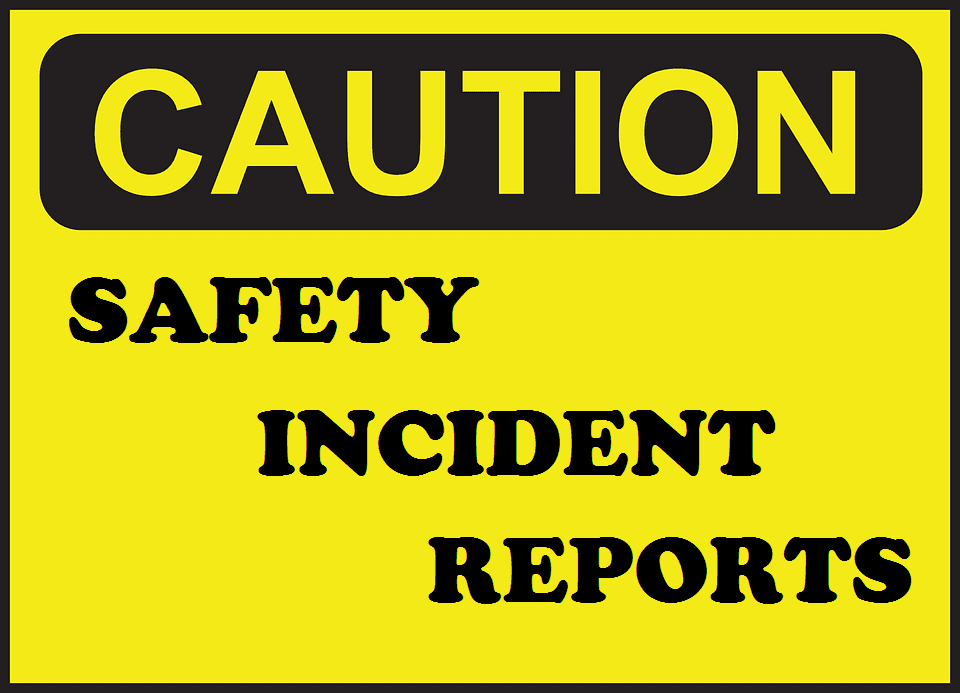Dangerous incident | SInNot 2017/01561Summary: An electric shock was reported by an operator who made contact with an external storage hot water system at a crib hut. The hot water system was supplied from a 240V AC source. The water heater was within a mobile crib hut fed by a generator.
Recommendations to industry: Engineering risk controls for the prevention of electric shocks are well known and if properly implemented should prevent the likelihood of these incidents. Mines should review electric shock protocols to ensure they are consistent with actual assessment options, noting that ambulances are equipped with electrocardiograph capability so that victims may be cleared without attending hospital.
Dangerous incident | SInNot 2017/01565Summary: A dump truck pulled out from a stop sign into the path of a light vehicle. The light vehicle driver took evasive action, avoiding a collision. The operator of the dump truck indicated he had stopped, looked in both directions, but did not see the light vehicle. The incident was not notified to the regulator until several days after the incident occurred.
Recommendations to industry: Principal hazard management plans for roads or other vehicle operating areas (WHS(MPS) Regulation schedule 1 clause 4) should ensure that adequate consideration is given to: - which vehicle should have the right of way
- the separation of heavy and light vehicles, where possible
- the use of proximity detection
- restricted / limited fields of vision from the operator’s position of heavy vehicles.
Refer to MDG 15 Mobile and transportable equipment.
Dangerous incidentSummary: A dump truck reversed through the dump windrow while tipping, causing the rear wheels of the truck to slump on the rill and raise the front tyre.
Recommendations to industry: Mine operators should review their tipping procedures to ensure that dump trucks do not tip close to edges. Mines should have systems in place to ensure windrow standards are regularly verified and maintained.
Consideration should be given to: - retraining dump truck operators in tipping procedures
- periodic workplace assessment of truck operators to ensure they are following tipping procedures.
Dangerous incidentSummary: During the installation of monorail services at a longwall installation face, a spotter was positioned at the maingate corner to communicate with a loader operator. The loader was being used to tow monorail services and the longwall distribution control box up a slight grade and into position with the assistance of two air mules on the monorail. During the task, the 24 mm rope failed near the connection to the monorail and retracted making contact with the spotter that was positioned at the maingate (63 metres away). The spotter was taken to hospital for assessment with abrasion, bruising and swelling above the right ankle.
Recommendations to industry: The procedure for this task required a winch attached to the loader. There was a fault with the rope on this winch, so the workers used a different rope with a direct pull from another loader. The tractive effort of the loader was much higher than the rope break strength.
When using slings, the pull force should not be capable of breaking the slight unless a designed weak link or point is installed.
Mine operators should: - identify that changes in work practices need to be appropriately managed through a change management process
- use appropriately rated equipment
- use engineering support as necessary to ensure equipment selected is suitably rated for the task to be performed
- use lifting or pulling equipment in accordance with manufacturer’s instructions and for the intended purpose
- develop JSAs for unfamiliar tasks.
Serious injurySummary:A contractor was refuelling a petrol-driven water pump. The pump caught fire and the person suffered burns to his hand. There was a strong wind blowing and this may have blown fuel onto hot engine parts during the refuelling. The incident was not immediately reported to the regulator.
Recommendations to industry: Petrol engines should not be used in mines unless there is no reasonable alternative. Petrol engines have additional hazards and risks compared to diesel engines.
Mine operators are reminded that hot engine exhausts can be a fuel ignition source, especially during hot weather.
This incident required scene preservation and immediate notification to the regulator. For guidance on reporting refer to Notification of incident and injury guide.
Dangerous incidentSummary: An operator was in the process of establishing the edge of bench bund prior to carrying out push over to an excavator on the bottom level. The operator had to rip a hard rock area prior to pushing up the bund. In dropping the drive down, the operator slipped the dozer into neutral and the dozer rolled backwards over the edge onto bottom level. The operator suffered a bump to his head as a result of the incident.
Recommendations to industry: Mine operators should ensure that: - supervisors and workers comply with mine procedures
- workers who operate equipment have sufficient experience
- incident scenes are correctly preserved and site emergency procedures are followed.
Operators of dozers and other heavy machinery must be adequately trained and assessed for competence. | 
Add Comment